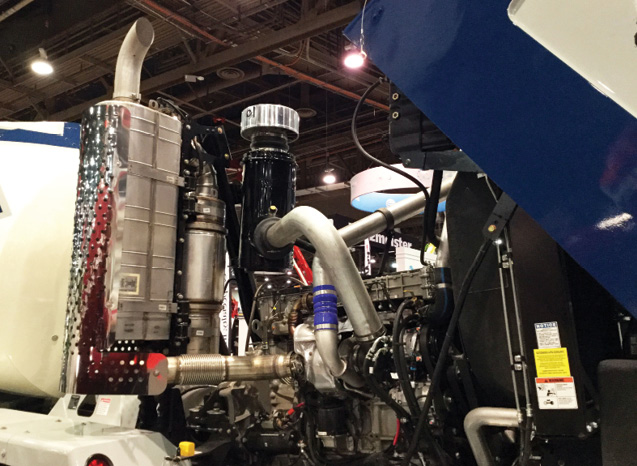The Environmental Protection Agency is finalizing a program to further reduce air pollution, including ozone and particulate matter (PM), from heavy-duty engines and vehicles. Compared to current standards, its new emissions thresholds are significantly more stringent and cover a wider range of heavy-duty engine operating conditions.
The final rulemaking promulgates new numeric standards and changes key provisions of the existing heavy-duty emission control program, including the test procedures, regulatory useful life, emission-related warranty, and other requirements. Together, the provisions in the final rule further reduce the air quality impacts of heavy-duty engines across a range of operating conditions and over a longer period of the operational life of heavy-duty engines. The requirements will lower emissions of NOX and other air pollutants (PM, hydrocarbons, carbon monoxide, and air toxics) beginning no later than model year 2027.
This final rule is the latest step toward implementing the Clean Truck Plan, which is moving the country’s heavy-duty trucking fleet towards low-carbon and electric technologies. Additionally, investments from the Inflation Reduction Act (2022) and Infrastructure Investment and Jobs Act (2021) are accelerating innovation in zero-emissions truck technology and training workers to install and maintain charging infrastructure.
“EPA is taking significant action to protect public health, especially the health of 72 million people living near truck freight routes,” says Administrator Michael Regan. “This is the first action under EPA’s Clean Trucks Plan to pave the way toward a zero-emission future.”
Relative to current rules, he adds, the new standards are more than 80 percent stronger, increase useful life of governed vehicles by 1.5-2.5 times, and will yield emissions warranties that are 2.8-4.5 times longer. New provisions guarantee that as target vehicles age, they will continue to meet EPA’s more stringent emissions standards for a longer period of time. The rule also requires manufacturers to better ensure that vehicle engines and emission control systems work properly on the road. For example, manufacturers must demonstrate that engines are designed to prevent drivers from tampering with emission controls by limiting access to such equipment.
The rulemaking is based on a robust, complete technical record consistent with the authority set forth in the Clean Air Act, EPA officials contend. The agency engaged a wide variety of stakeholders, including impacted communities, state and local governments, industry leaders, and environmental organizations “to develop final standards that are as strong as possible, take effect as soon as possible and will last as long as possible.”
In the coming months, EPA intends to release the proposals for the remaining two steps in the Clean Trucks Plan. These include the proposed “Phase 3” greenhouse gas standards for heavy-duty vehicles beginning in Model Year 2027, as well as the proposed multipollutant standards for light- and medium-duty vehicles beginning in Model Year 2027.

